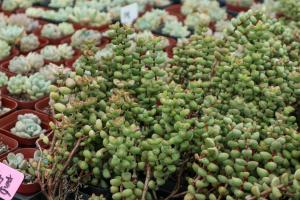Which Pot is Best for Tulsi Plant?
Tulsi plant, also known as holy basil, is a sacred plant in India and is considered to have many medicinal properties. It is easy to grow and maintain, making it a popular choice for both indoor and outdoor gardening. However, choosing the right pot for your tulsi plant is crucial for its growth and health. In this article, we will discuss which pot is best for tulsi plant and why.
Terracotta Pot
Terracotta pots are a popular choice for growing tulsi plants as they are made of clay, which is a porous material that allows for good airflow and drainage. This is important as tulsi plants do not tolerate stagnant water or wet soil well, and a well-draining pot prevents overwatering and root rot, which can be fatal for the plant. Terracotta pots are also aesthetically pleasing, adding a rustic and earthy look to your garden or home.
Plastic Pot
Plastic pots are another option for growing tulsi plants. They are lightweight and easy to move, making them a practical choice for indoor gardening. Plastic pots are also less prone to cracking or breaking, making them ideal for areas with extreme temperature fluctuations. However, one downside of plastic pots is that they are non-porous and can lead to soil compaction and poor drainage, which can affect the plant's health in the long run.
Ceramic Pot
Ceramic pots are a great choice for those who want to add decorative elements to their gardening. They come in various designs and colors, making them a popular choice for indoor gardening. Ceramic pots are also more durable than plastic pots and are an excellent choice for tulsi plants that require stable soil moisture levels. However, they are heavy, making them difficult to move, and they are also prone to cracking if exposed to extreme temperatures.
Metal Pot
Metal pots are a stylish choice for growing tulsi plants, and they provide excellent drainage and airflow. Metal pots are durable and can withstand extreme temperatures, making them ideal for outdoor gardening. However, they can become too hot during the summer months, leading to root damage, and they are not suitable for acidic soils, which can corrode the metal.
Conclusion
In conclusion, the best pot for tulsi plant depends on your individual needs and preferences. Terracotta pots are a safe choice for their excellent drainage and airflow. Plastic pots are practical but require more attention to soil moisture levels. Ceramic pots are ideal for their decorative elements and optimal soil moisture stabilization. Metal pots provide excellent drainage and durability, but they are not suitable for acidic soils. Choose a pot that suits your gardening style and enjoys the beauty and health benefits of tulsi plants.

 how many times do yo...
how many times do yo... how many planted tre...
how many planted tre... how many pine trees ...
how many pine trees ... how many pecan trees...
how many pecan trees... how many plants comp...
how many plants comp... how many plants can ...
how many plants can ... how many plants and ...
how many plants and ... how many pepper plan...
how many pepper plan...































